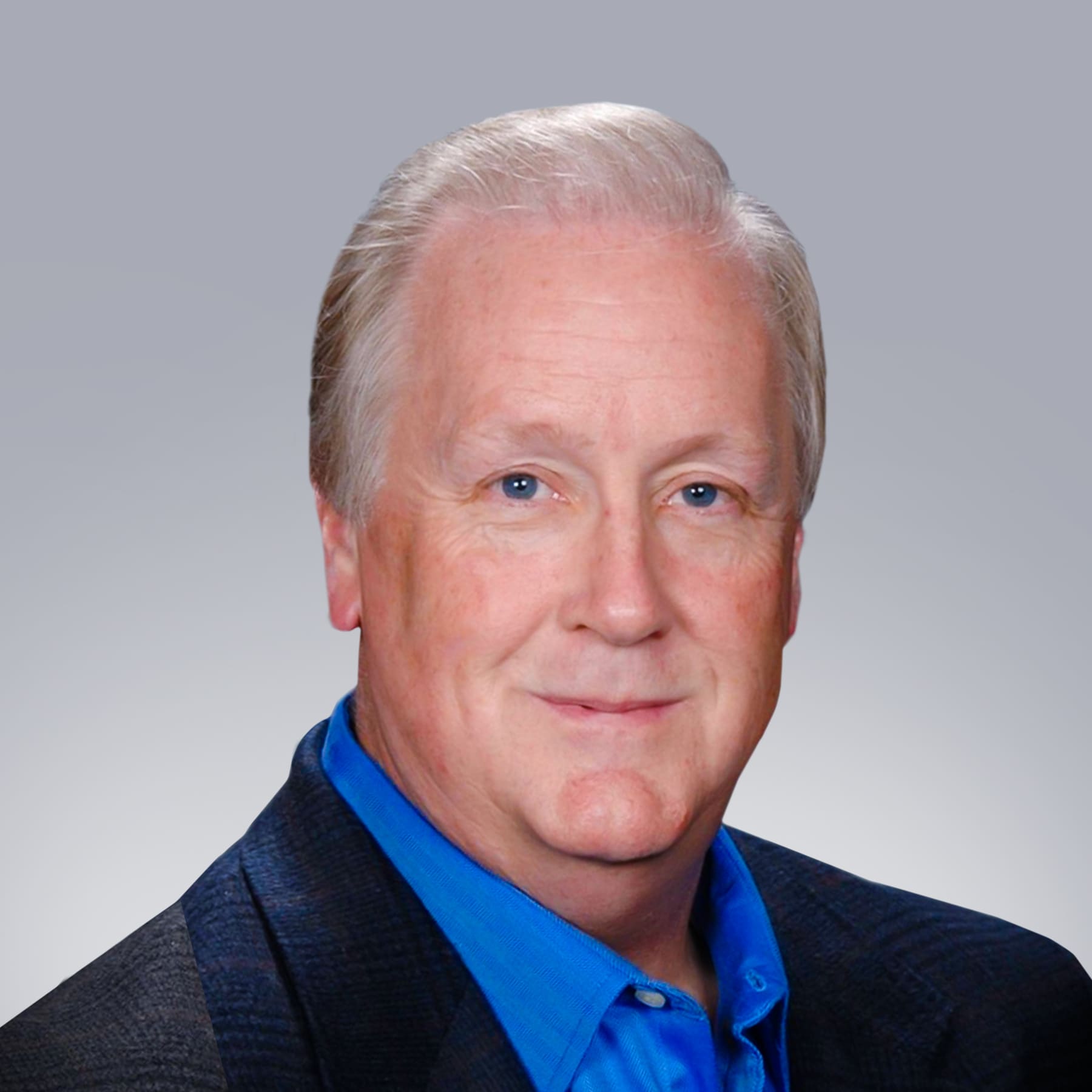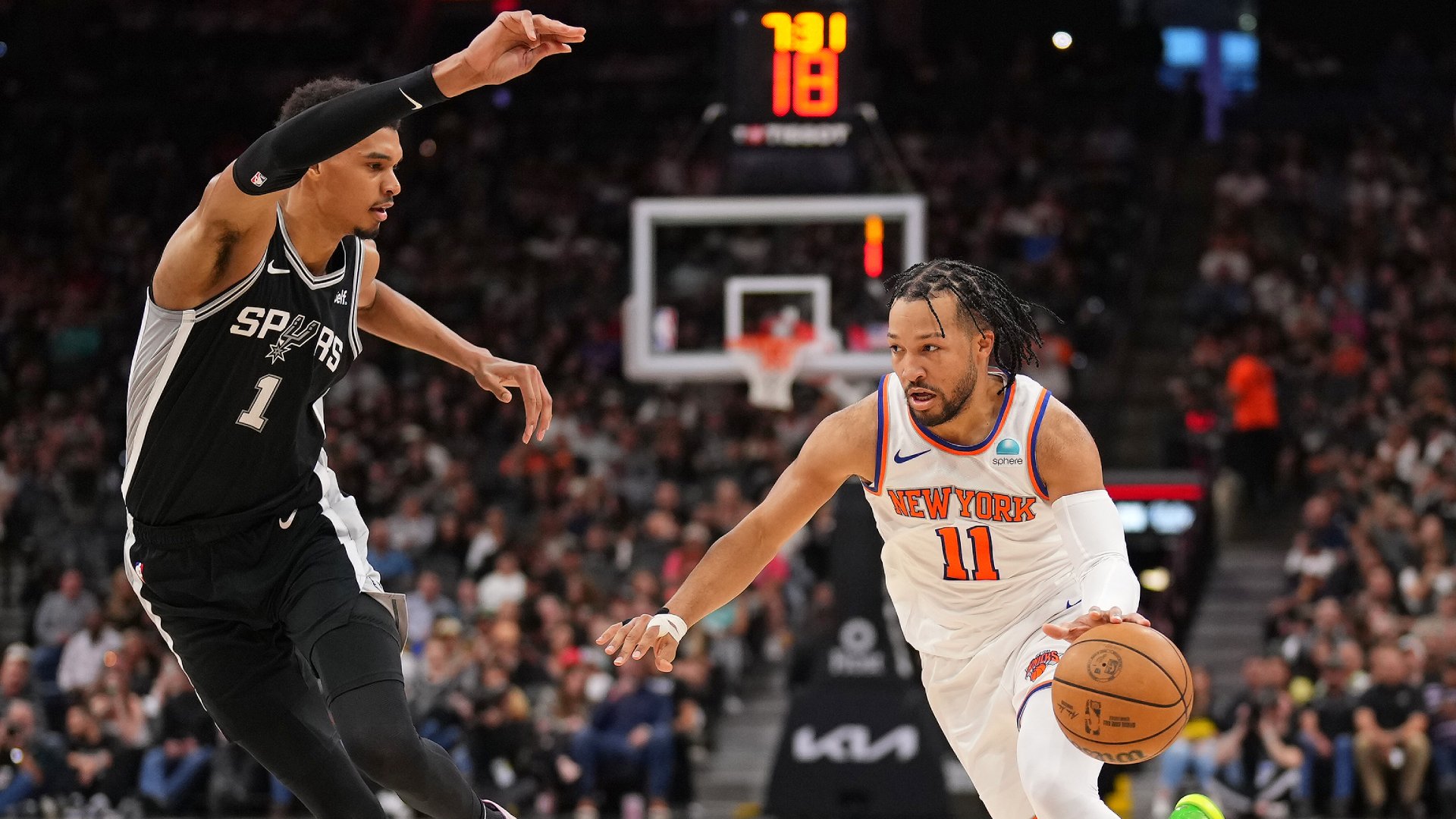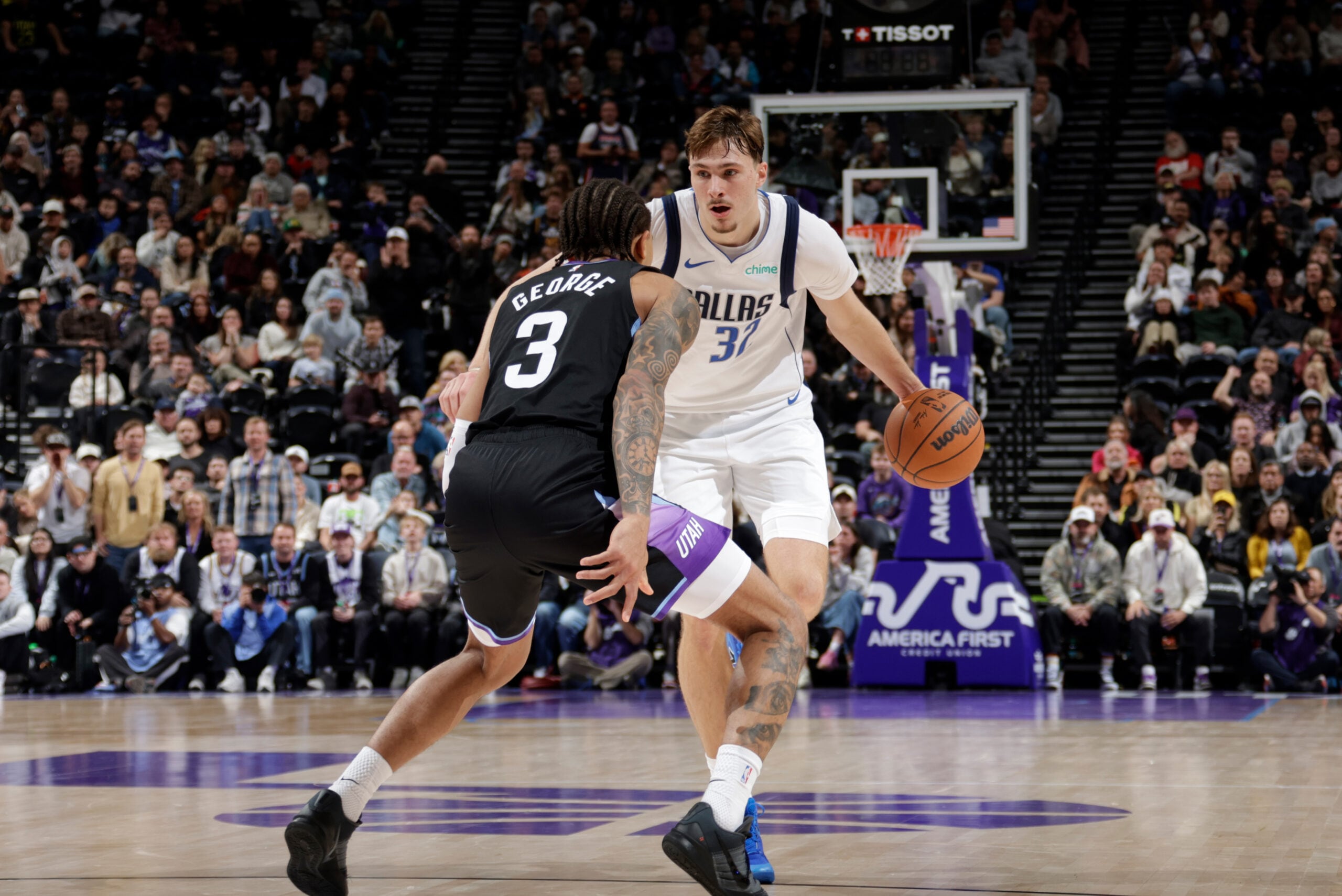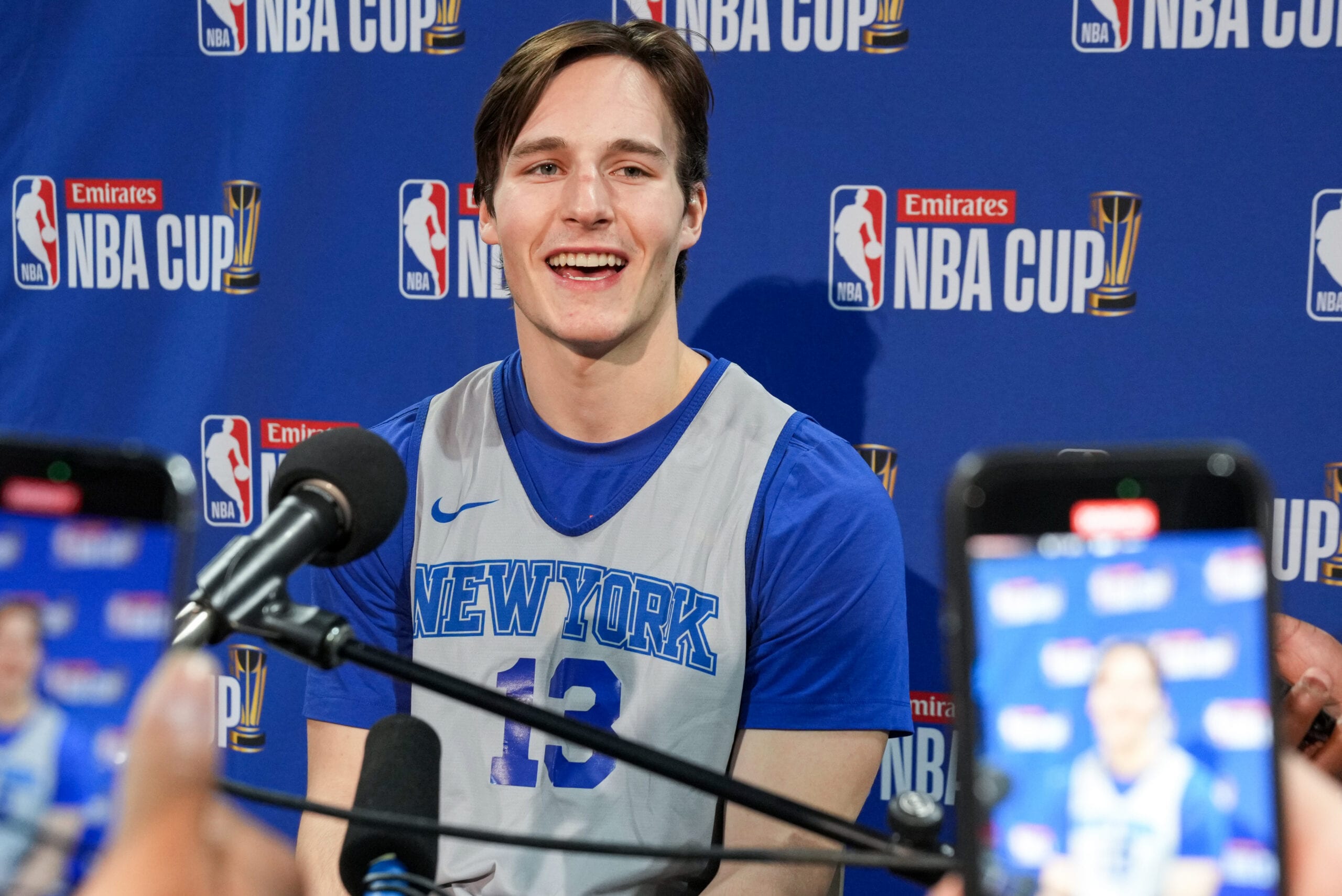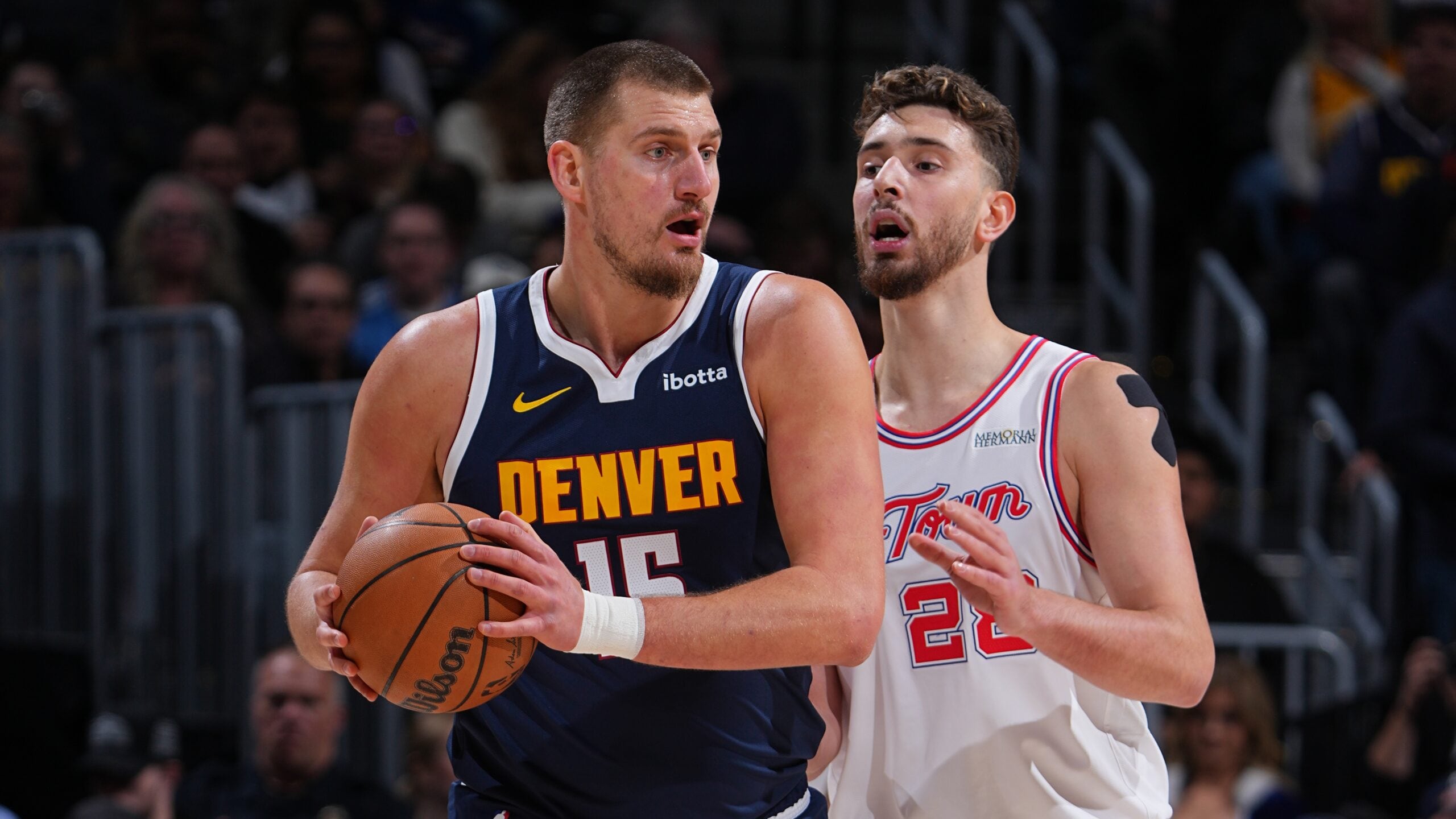
LAS VEGAS — It didn’t matter that this was July, in the desert, in a game that would be forgotten as the lights went out that night at the Cox Pavilion on UNLV’s campus.
In the heat of the moment, which had everything to do with basketball and nothing to do with the 102-degree temperature outside, this was competition. This was the NBA (or close to it), this was winning vs. losing.
John Lucas Jr., coach of the Minnesota Timberwolves’ entry in the NBA Summer League, wanted his way. Sean Sweeney, working the sideline for the Detroit Pistons’ squad, did too.
In the middle, in the dwindling seconds of the teams’ tight finish last week, was referee Natalie Sago.
Geographically, Sago was near the Wolves bench, facing in the opposite direction when Lucas Jr. erupted behind her.
“I got excited because I knew we had a timeout left and it was a big possession,” Lucas Jr. said a few minutes later, calm having subbed in for chaos by then. “So I was trying to call a timeout. I felt like we had possession. I was yelling ‘Timeout! Timeout!’ ”
Only thing was, Lucas had ventured into no coach’s land. Oh, and his team didn’t have possession after all.
“I just turned around and put my hands up,” Sago said. “He really wanted it, and when I looked, he was two or three steps out on the court.
“I said, ‘Please get back.’ And then their whole bench reacted. They wanted the timeout or a foul. I said, ‘No more bench reaction.’ ”
From the far end of the floor, here’s how it looked: Sago dwarfed by a wall of a half dozen young men a foot or more taller, with Lucas Jr. to her right, barking in her ear.
Then Sweeney got into the act.
“The Detroit coach is standing at halfcourt with his hands up,” Sago recalled. “He’s wondering why I haven’t called Minnesota for a ‘coach on the floor’ technical. So I looked at him and said, ‘I would do the same for you.’ And then everything was fine.”
Order was restored. The game resumed and soon ended. The outcome didn’t swing on that one heated exchange.
“It was a great conversation,” said Sago, who trained and studied at Summer League – after three seasons each in the G League and the WNBA — with the goal of breaking into the NBA in 2018-19. “A great going-back-and-forth. At the end, he [Lucas] smiled, I smiled. So we both knew, ‘We’re having fun out here and we’re human.’”
There was, however, one detail in need of explanation. As Sago turned back to the action, Lucas reached out and gave her a pat on the…
Hip?
School in session … for officials
There are afternoons and evenings at Summer League when you’d swear there are more referees in the gym than basketball players, and you’d be right.
There were 81 game officials assigned to work NBA Summer League, with a bevy of NBA referee executives, consultants and retired and active veterans on hand as supervisors and instructors. This is as much the Las Vegas Officiating Summer Camp as it is an intro to the league for rookies and others.
And every morning, in a hotel ballroom over continental breakfast, longtime NBA ref Monty McCutchen — a year into his managerial role as vice president and head of referee development and training — leads a 90-minute training session. One day, NBA.com was invited into the meeting.
“This is an important part of your life,” McCutchen told the referees in attendance, about halfway through last week’s schedule. “So you might be nervous. It’s OK to have some nerves. It is not OK to not try to work through it and get to the work. How do we get through it? Get to the fundamentals.”
I would say it’s akin to playing an instrument. You can learn the notes. That doesn’t mean you make music. My kids do violin, and if they’re still thinking about where to put their fingers, they’re not making music.”
Monty McCutchen, on how new referees should view calling games
These daily gatherings are instructional classes as well as morning huddles with heavy doses of motivation, psychology, energy, introspection and pep talks.
They represent what might be considered the modern era for NBA referees. For much of its first four or five decades, the league’s atmosphere of officiating was casual, even loose as far as the tone set from night to night by that game’s crew chief.
Then came an era of intense oversight and an apparent effort to wring all personality out of the officials. Refs were instructed to roam the floor like salt-and-pepper shirted Roombas, keeping interactions with the players and coaches to a minimum.
“Refereeing at times has been limited to just talking about mechanics and where to stand,” McCutchen said after one session last week. “That’s not really what goes on when you’re actually working a game. You have to deal with your own sets of emotions and how you set those aside to do professional work.
“I would say it’s akin to playing an instrument. You can learn the notes. That doesn’t mean you make music. My kids do violin, and if they’re still thinking about where to put their fingers, they’re not making music.”

That’s why some of the comments and questions McCutchen posed from the front of the vast room were about the referees themselves, not merely the in-game events they reviewed on a projection screen.
Here’s a sampling:
— “An overwhelming amount of our errors come from a feeling that when something looks ugly, we somehow feel a responsibility as an official that it must be illegal. The pressure builds up inside of us of, ‘I don’t want to miss something.’ You must get comfortable being uncomfortable if you want to be a well-disciplined official.”
— “A disciplined official is a high-accuracy official. Notice how I did not say they were a perfect official. There is no such thing.”
When McCutchen wasn’t going frame-by-frame through games, he was off to the side, where a makeshift basketball court had been taped out on the ballroom carpet. He spotted of the importance of an “outside-in view” of plays (rather than getting caught up inside of them) and the ideal of standing “flat and tight” when positioned in the half court.
— “Refereeing defense is an interesting concept. If we telescope in and only referee the defense, we’re only seeing half the play. You must have a contextual relationship between the defender and the offensive player.”
— “OK, how do offensive players work? They work off jab steps, they work off spins, they work off crossovers, they go through their legs — all designed to take the defender on a 1-on-1 move.”
— “Who has to be legal first? Defense.”
There was an expected emphasis on Xs and Os, but there was a fair amount of nuance, in the discussions, too.
— “Ugly plays still can be fouls. Say there’s a foul and then a flop afterwards. How do we handle that? You’re running the game. People need to know you know he flopped. So call the foul because he’s earned it. And then say, ‘I don’t need your extra help.’ So that everyone, including him, doesn’t think it’s because he flopped.”
— “When we’re the primary, what do we want to be calling? Strikes down the middle. We’re not painting the edges.”
— “Here’s a statistic you might find interesting: Our best secondary calls are worse in percentages than our worst primary calls. Let that sink in. What it means is, when we go into our secondary areas of coverage, ‘Is my judgment better than someone else’s judgment?’ ”
More than just calling the game
McCutchen spoke at length about game awareness, urging the young referees to immerse themselves in media coverage of the NBA to better understand its backstories. Which players get physical? Are there players on the floor that night who are harboring a grudge against an opponent?
All of it needs to be factored into the refs’ game awareness. The boss recalled for them one official who didn’t pay attention to the NBA as closely as he had pretended.
“We were talking and I asked him, ‘Are you going to watch the games tonight?’ And he said, ‘Yeah. What channel are they on?’ And it was a Thursday night – they’d only been on TNT on Thursdays for about 20 years.”
McCutchen occasionally called on refs in his audience to share their views of a play. The videos made for a vibrant laboratory, with some of the league’s most senior and respected referees not spared from second-guessing up on the big screen.
— “Early decision-making is bad. It doesn’t allow us to be a discerner. If we’re a discerner, we have air in our belly, not up in our throat. How do you check that? If your tongue is between the whistle, you’re not in the right place.”
— “We have to know who the most aggressive people are on the floor, and we all know, steals steal back. Right? He’s embarrassed. The player who’s just had the ball stolen becomes the most aggressive player in the room. We don’t pick on him. But it means we are aware that he is our problem at this point.”
— “Because everybody has 10 fouls in this [Summer] League, what are we seeing after every turnover? Take a foul. They don’t want to be yelled at about giving up two points.”
A couple of late-game situations were used to illustrate the unintended consequences a hasty or tardy decision can have on the outcome of an NBA game. The spotlight will only intensify on such moments as legal sports gambling becomes more embraced by the United States’ pro sports leagues.
McCutchen played and replayed footage from a one-point game with slightly more than 10 seconds remaining. It was a situation in which the defensive team might start out trying to steal the ball in a trap but, failing that, immediately shift into foul mode. A ref must shift just as swiftly, without blowing the whistle too soon on the former or too late on the latter.
“So, 10.4 [seconds left]. Trap. He’s able to break it! Then one foul, two fouls … three fouls. Freeze it! Look at the difference in the game from our lack of attention to detail.”
The game clock that should have been stopped with 6.7 seconds, after the first swipe at the ballhandler, rather than at 1.7 seconds after the third swipe.
— “We want the game to move slow for officials. It’s not just about seeing a play. It’s about seeing it and then adjudicating it properly.”
— “Sprint to the baseline. … Why is it important to get to the baseline in a sprint? It allows you to settle in, take a breath and find your area.”
Some less-experienced NBA officials were participating in Summer League, too, hoping to hone their skills so they can serve as future crew chiefs. McCutchen focused for a segment on that, stressing the aura of teamwork that gets set — or not — by the game’s senior official.
— “As crew chief, you’re worrying about ‘crew accuracy’ for the game. First of all, we have to acknowledge that [on a given play] you might be wrong. … Don’t speed up other officials’ whistles. Empower your partners.”
— “If you don’t know, we look [at the slot] official. If they don’t know, they what? They look at the trail. And if the trail doesn’t know, what does the trail do? Jump ball. And it happens like that! It’s look-look-look-point, all in a nanosecond. ‘We are a team.’ ”
— “It is not embarrassing to go to center court and call a jump ball. ‘How can you not see that?’ You say, ‘I didn’t see it.’ When you start guessing, you’re not very good.”
At the end of the 90-minute session, referees who didn’t have early games to work were invited to stay and review more video with veterans and retired officials such as Joey Crawford, Bennett Salvatore, Bernie Fryer and Mark Wunderlich.
More than 20 stuck around.
Diversity through merit
Nineteen of the 81 referees in Las Vegas this summer are female. And more than half of the new refs hired for the 2018-19 G League season are female. So McCutchen’s class was decidedly co-ed.
Earlier in the week, NBA commissioner Adam Silver had spoken proudly of the new direction, which will be noticeable in a league that had just one female ref last season (and Lauren Holtkamp might be out for a while after suffering a knee injury in a late-spring game.)
“There is no physical reason why that’s the case,” Silver said of Holtkamp as the lone woman. “It’s just the way things have grown up in the league, but we’re determined to change that as quickly as possible. [We] have gone out and really doubled down on the recruitment of women into the officiating ranks.”
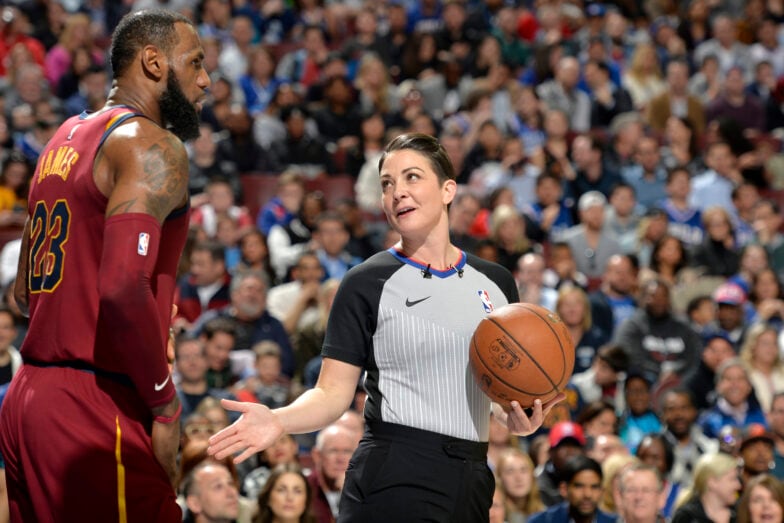
Sago might be one to crack an NBA crew’s lineup this season. The 29-year-old from Farmington, Mo., played Division II softball, but grew up as the daughter of a preps and college basketball ref. Her love of the game grew when she would ride with him to and from games, sitting by herself in the bleachers while he worked.
“I was raised in a gym since I was a pumpkin seed,” Sago said. “My dad wanted me to referee in college to get experience, but it was a lot with studies and everything. After college I got started.”
It took a couple of tries, first with sixth-grade girls, then with eighth-grade boys, before Sago felt comfortable. “Something just clicked, and I loved it,” she said. “They couldn’t get me out of the gym — I worked like six AAU games that day, just back-to-back-to-back.”
It didn’t take long during her initial high school and college seasons before a referee scout recommended her to the NBA’s “grass roots” program. Sago got hired into the G League, then was invited to work in the WNBA.
Said Michelle D. Johnson, the retired Air Force lieutenant general now serving as the NBA’s Senior VP and Head of Referee Operations:
“Five years ago, the goal was to have a scouting program. Now we have that and we have people on the cusp of being hired. They looked at the grass roots events, pro-ams and tournaments. You look at about 3,000 candidates. Then you narrow it to 150. Then maybe we hired a dozen for the G League. You look for talent, and it keeps getting better and better.”
Salvatore said he was impressed with the air of authority a few female ref recruits were showing. He contrasted their confidence with the challenges Violet Palmer and Dee Kantner faced when breaking in as the NBA’s first female referees in 1997-98. There was respect then from players and coaches, heeding the league’s mandate, but the trust level now is higher and more natural.
“The coaches and players, they’re really encouraging,” Sago said. “They say, ‘We commend you, because you’re stepping into a man’s world.’ We get a lot of respect from all the men in this environment. Our male counterparts, they love it. It makes us feel more a part of it. We all have great bonds and they’re rooting for us too.”
Said Pat Delany, the Orlando assistant who had a few games in Vegas worked by new female refs: “They do the same job as everybody else out there and we’re happy to have ‘em. … Just as we as coaches are working on our craft, I know they’re doing the same thing.”
McCutchen believes the NBA no longer needs to focus on the recruitment of women or other minority officiating candidates because the pipeline has been properly primed.
“We have to be open to the idea that a good referee can come in many packages. You don’t have to be 6-2, you can be 5-2,” he said. “It’s important that Michelle and I set up a culture where talent rises to the top, not packages. We’re at a point now where we can hire the best officials, and I know for a fact that some of them are going to be women.”
Sago returned the compliment, crediting the training in programs such as the one held each morning through Summer League.
“This is where all the learning happens,” she said. “We could snapshot one play and talk about it for 30 minutes. There’s so much learning about mechanics, discipline, primary versus secondary coverages.”
And, er, hip pats?
Asked after that Minnesota-Detroit game if he would have reached out and given NBA refs Ed Malloy or Zach Zarba a friendly smack, Lucas was as precise with his words as he was with his hand.
“I hit her on the thigh,” he said. “I knew where my placement was.”
Said Sago, with a laugh: “He aimed low. He was really good about it.”
* * *
Steve Aschburner has written about the NBA since 1980. You can e-mail himhere, findhis archive hereandfollow him on Twitter.
The views on this page do not necessarily reflect the views of the NBA, its clubs or Turner Broadcasting.
